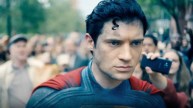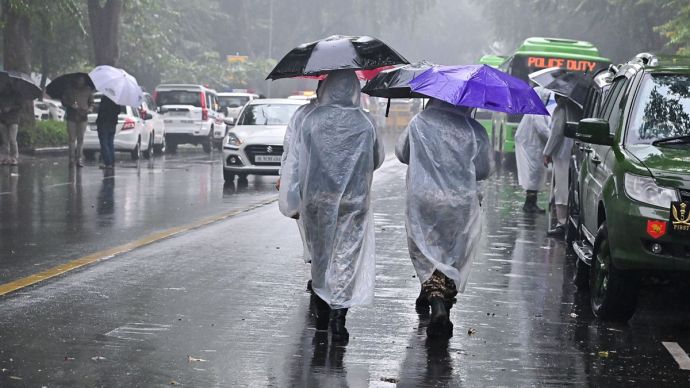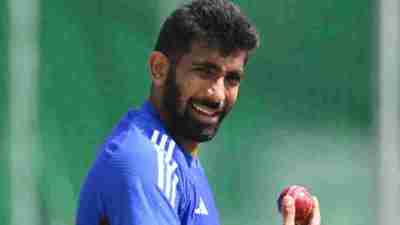There was a time when Hindi cinema would repeatedly turn to India’s classical music and dance heritage for sustenance. There were such exquisite films based on Indian classical dancing as “Kalpana” in 1948, where the real-life couple Uday and Amala Shankar performed a classical Indian ballet through which the story unfolded. Among other films that explored the deep-rooted connection between dance and cinema were V. Shantaram’s “Jhanak Jhanak Payal Baje” in 1955, where the director’s wife Sandhya co-starred with Kathak exponent Gopi Krishna for a choreographic odyssey, and S.S. Vasan’s “Chandralekha”, which also opened the same year.
In the 1960s, films about Indian dance like Vijay Anand’s “Guide”, Lekh Tandon’s “Amrapali”, and Subodh Mukherjee’s “Abhinetri” gave trained dancer-actresses like Waheeda Rehman, Vyjayanthimala, and Hema Malini a chance to display their nimble feet while enhancing their celluloid image as deeply resourceful actresses.
All that nritya-jamboree stopped with K. Vishwanath’s “Jaag Utha Insaan” and “Sur Sangam”. Both were massive successes in the southern Indian original but thundering flops in Hindi in spite of the masterful dancing of Sridevi and Jaya Prada.
Films about classical music and musicians were also a favourite — from Vijay Bhatt’s “Baiju Bawra” in the 1950s and Hrishikesh Mukherjee’s “Anuradha” in the 1960s to Hrishikesh Mukherjee’s “Abhimaan” in the 1970s.
Thereafter, the disco culture, represented by the plagiarised pop music of Bappi Lahiri, took over Hindi cinema in the 1980s, rendering all classical arts futile, if not fatuous.
But just when we thought films based on the classical arts were all but lost to mainstream Hindi cinema, came along two films to prod awake the classical heritage.
“Dance Like A Man” and “Morning Raga” are based on the plays of Mahesh Dattani. Both explore the polemics and passions that segregate today’s generations from the Indian classical heritage of the past. While “Morning Raga” takes a look at Carnatic music through the eyes of a practitioner — played brilliantly by Shabana Azmi, who learnt Carnatic music to play the role — in “Dance Like A Man”, Arif Zakaria and Sobhana are remarkably in character as two fading Bharatanatyam dancers coping with their daughter’s (Anoushka Shankar) future in a world where the arts are becoming redundant.
Sobhana, who is the niece of yesteryear dancer-actress Padmini, feels “Dance Like A Man” offers a dancer like her a rare opportunity to practise her passion on screen.
“Otherwise, where are the films about dancers and dancing?” she asks.
Perhaps representing the last of our classical-dancing actresses, Sobhana belongs to that dying school of art where actresses applied their dancing skills to their on-screen roles.
Though both the films are in English, “Dance Like A Man” and “Morning Raga” are creatively equipped to combat the hurricane of philistinism that has taken over Indian mainstream cinema.
While the classical song is extinct in our cinema, Indian classical dance has over the decades gone from “Kalpana” to “Choli ke peeche kya hai” in Subhash Ghai’s “Khalnayak”, where Madhuri Dixit’s postures were midway between that of a ballerina and a temptress. Maybe “Dance Like A Man” will take Hindi cinema back to its roots in the classical arts and away from the dirty dancing formula. The cultural dilemma and conflicts faced by exponents of a fading art form seem to fascinate playwright Mahesh Dattani. In “Morning Raga”, a Carnatic singer comes to terms with past tragedy and present exigencies through her association with the young.
And in “Dance Like A Man”, which Pamela Rooks directed from Mahesh Dattani’s layered and luminous play, we meet two Bharatanatyam dancers, Ratna and Jairaj, in the declining years of their professional lives. Initially, we see the couple completely from the outside, first from the viewpoint of their purported son-in-law Vishal (Sameer Soni) and then their daughter Lata (Anoushka Shankar). This deliberate exteriorisation of the narrative makes us stand outside the protagonists’ lives and yet be part of them.
Pamela Rooks, whose adaptation of Khushwant Singh’s “The Train To Pakistan” captured much of the exacerbated ethos of those troubled times in 1947, here goes for a more intimate portrait of fissures. We see two fairly anachronistic characters, Ratna (Sobhana) and Jairaj (Arif Zakaria), as two individuals trapped in a cultural chasm.
At times, the politics of aesthetics are shown to seep into their lives with unsettling brutality, rendering their mutual and uncommon love for a common art into a fight for self-assertion rather than reason for collaborative creativity. At first, when we see the dancing couple from Vishal’s viewpoint, Jairaj and Ratna with their dance-is-life theory of existence appear ridiculously self-absorbed. The conversation among the trio is so tangential as to appear ridiculous. While Vishal wants to broach the subject of their daughter’s marriage, the couple is only concerned about their daughter’s endangered ‘arangetram’ (dance initiation) as the mridangam player has broken his hand.
The sequence is constructed as a typical chamber piece with minimal camera movement and optimum communication of complex emotions through the expressions of the actors as they plunge into their characters with a relish afforded only in a cinema that allows its emotions to emerge through the characters, and not vice versa.
In what can be termed an opera-in-reverse, Rooks records the bitterness and undercurrent of rivalry between the couple in a spiral of tones that goes from their future son-in-law’s mild amusement to a grim and greatly disconcerting debate on high art and its exploitation, even by those who practice it with seeming single-mindedness.
As the slim but profound story unfolds, we see Ratna to be a woman of many devices. Partly a devoted wife and defiant daughter-in-law (watch Sobhana carefully in the sequence with pa-in-law Mohan Agashe where she bursts into a totally improper giggle when reminded of the effeminate nature of male dancing), Ratna also unravels before us as a woman who has perhaps used her husband to further her own vastly superior dancing talents. In his expressions of bitter anguish and yet smothered rage, Arif Zakaria reminds us of Amitabh Bachchan in Hrishikesh Mukherjee’s “Abhimaan”. The male ego cannot comprehend the phenomenon of the spouse overtaking his talent. Though this is a far more complex film than “Abhimaan”, “Dance Like A Man” finally seems more stagy than other films about two professionals married to one another who fall apart in the race to the top.
Unlike Mahesh Dattani, who has deliberately denuded his film “Morning Raga” of the theatrical element, Pamela Rooks seems to revel in the staginess of the original material. Fortunately, except for Sameer Soni who’s a little too filmy — or glamorous, if you will — for the film’s authentic albeit stage ambience, the cast seems to instinctively grasp the nuances and layers that decorate the drama of the driven. Curiously, Pamela Rooks films Jayaraj’s troubled past with his autocratic father (Mohan Agashe) in an orange-glow mood rather than the usual sepia tones applied to cinematic memories. Flashback in this way is fleshed with more flamboyance than usual.












